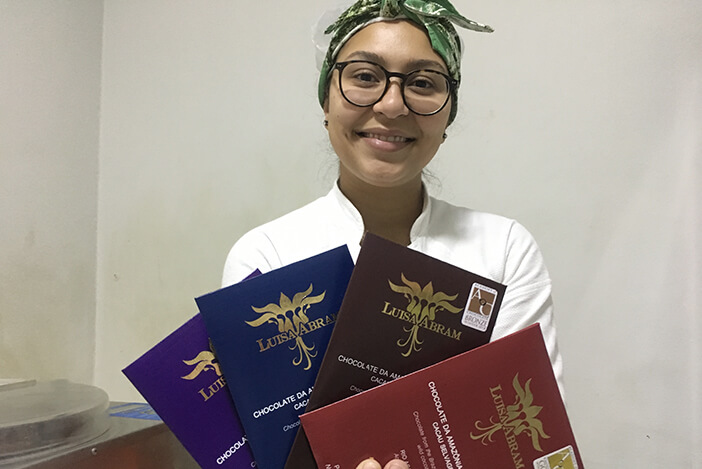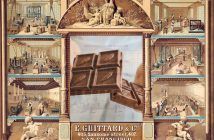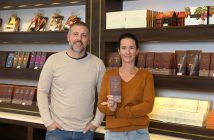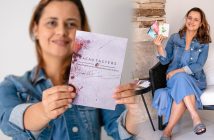The Luisa Abram brand only produces chocolates from Amazonian wild cocoa, and has been drawing the attention of the most demanding chocolatiers
Chocolatier Luisa Abram despite her young age, just 26 years, has already gained a lot of respect in the world of bean to bar chocolates. Always very determined, once she decided to work with chocolate in 2014, she began a long journey to the Amazon after the wild cocoa…
She has never lacked determination. For several years, Luisa thought that her professional career would be medicine and, as she studies for the entrance exam (vestibular), she attended one of the best vestibular courses in the city. She gave up on her profession, but with an excellent experience, she managed to pass several other courses: dentistry in Rio, food engineering in Viçosa and so on.
She already had her ticket purchased for Minas when she changed her mind again: she borrowed money from her father’s wallet to enroll in the Anhembi-Morumbi gastronomy exam, and did not tell anyone.
She was approved, and at first, her parents did not like the idea. But since it was only a two-year course, they agreed. Luisa thought that, at the end of the period, she would go to Italy and France to learn the art of pâtisserie, improve in the art of cooking bread etc.
But when she arrived in her senior year of college, she thought the patisserie was not for her, and then, through her professor and chef, André Fontes, discovered the immensity of Brazilian ingredients. She totally fell in love and changed course.
“Our biodiversity is gigantic and yet we continue to look for techniques and ingredients out there. It is a total waste, “he says. Since she already had the objective of getting to know the Amazon, she ended up convincing her father, a financial market investor, to go with her there in 2014 in the last semester of college. “I was going to meet the staff at Cooperar, a local cooperative of wild cocoa farmers. I did not know what I was going to find, I had no one to exchange ideas with, and it was the first time I saw a cocoa tree in my life, “he recalls. He discovered that cocoa is native to the Amazon and realized that his business had to add environmental and social sustainability to the region and its producers. “That was the DNA of my business,” he says.

Luisa Abram – Amazon
She came back with 20 kg of cocoa in her suitcase, with no equipment to make the chocolate, as well as an oven that she had bought earlier to make macaroni and breads. It was at this time that the world’s smallest chocolate factory opened, a little room at her parents’ place, in Brooklin, where she began to produce, and whose equipment was all created or adapted by her father, André Banks, a training engineer. In fact, he is still vitally important for businesses to thrive, since it is him who organizes the cocoa stock, negotiates with the communities, acts as an official travel photographer and much more.
Currently, Luiza buys wild cocoa from four communities, Purus, Acará, Jari and Puruá and produces eight types of bean to bar chocolates. She found each of the communities by researching, talking to people and going to distant locations. “For you to have an idea of the distance and the difficulty, to get to the community of Jari, one has to leave their boat 19 times, while crossing 19 waterfalls,” she explains.
Last year, she entered into an agreement with Pão de Açúcar to sell her bean-to-bar in 80 stores, which made its production increase 40%.
The riverside communities of the Amazon
The cocoa that Luisa seeks is where nature made her appear, growing in the shadow of other centuries-old trees. This cocoa is not planted or cultivated in a manner planned by man. It is the fruit of the action of nature. The riverside communities of the Amazon live on what the forest provides. And they play a key role in their preservation. With cocoa, the same thing happens.

Luisa Abram
One of the most important parts of Luiza’s work is teaching communities to improve their management, a process that goes through a careful harvest, selecting the fruits for the fermentation of the almonds and the correct bagging. “Thereby, everyone involved receives more for the fine cocoa than if they were producing cocoa commodities. When I started, many of these communities did not know how to work the fermentation process. And neither did I,” he recalls.
To solve this, as soon as she started visiting each of the communities, she hired the American consultant of large chocolate companies, Daniel O’Doherty, from Cacao Services, who visited the communities of Juruá and Purus. Graduated as a biologist, Daniel came to Brazil to do the post-harvest. He is well known in the world of fine cocoa, but has never worked with wild cocoa, although he has fermented the fruit in more than 20 countries.
“We learned a lot from him, that only came to Brazil because I was accompanying him and spoke Portuguese. Otherwise, he would not be able to pass on his knowledge to the communities,” he says. Today, he keeps on coming to Brazil sporadically, without charging, because he fell in love with Luisa’s proposal.
“Daniel is passionate about chocolates, lives in Hawaii, has a piece of land there and plants cacao. He is still trying to make chocolate,” she smiles.
New package
Recently, she changed the packaging of its bean-to-bar chocolates, which now contain two 80-gram bars, and explanatory texts in English and Portuguese, since 30% of its 2 to 2.5 tons production is exported to the USA, Canada, France, New Zealand and Australia. “We have a joint venture with Mark Christian, a chocolate critic and owner of the C-spot site, the largest bar atlas and chocolate maker on the internet. He’s hooked us up with the biggest bean-to-bar distributor in the US and hence, we’re selling there,” he explains.

Luisa Abram
As for Europe, despite selling to England since 2015, to the chocolate club Cocoa Runners, Luisa says that it is a much harder market to enter and there is practically no bean-to-bar culture. “Europeans has a particular taste, they appreciate a chocolate with more cocoa butter. And I do not use it; I only use cocoa almonds and organic sugar,” she explains.
New origins and products
Soon, she will launch chocolate made with wild cocoa from Juruá, always at 70% and 81%, cocoa from the Novo Horizonte community. And, by the end of this year, for Christmas, she will launch a box of stuffed truffles with fruits from the Amazon. “Probably, the fruits will come from Pará and will be the cupuaçu, bacuri, taperebá (cajá) and the cocoa pulp. “I will go there in September, pick up the fruits and bring them to São Paulo, packed in pet bottles and freezes. It is a way for this garbage to leave the forest,” says Luisa.
For the second half of 2019, she intends to launch a new origin, Oiapoque, of wild cacao caciporé, native of Brazil, of the Forasteiro species. This is the most planted cocoa in the world and, as the sensory profile is not very exotic, it will be an opportunity for Luisa Abram brand to reach new, more comprehensive markets. “In addition, genetic research has shown that this cocoa is from a super pure family with no grafts. Hopefully, we are very close to where the amenolado, a subfamily of the forasteiro,” she concludes.
Where to find
In Brazil, the Luisa Abram chocolates are sold on her website www.luisaabram.com.br or in 80 stores in Pão de Açucar, www.paodeacucar.com.br, Santa Luzia, www.santaluzia.com.br, San Marché, www.marche.com.br, Eataly, www.eataly.com.br among others.



